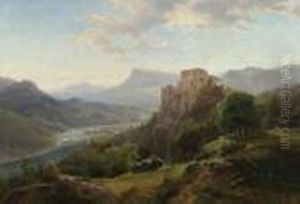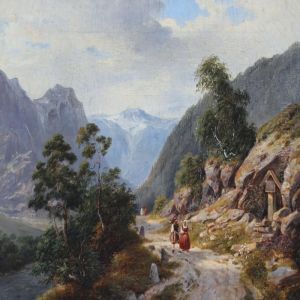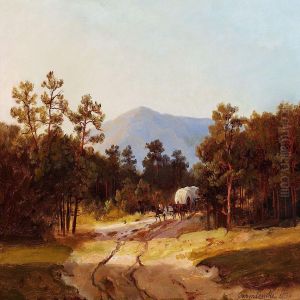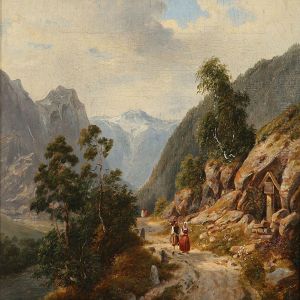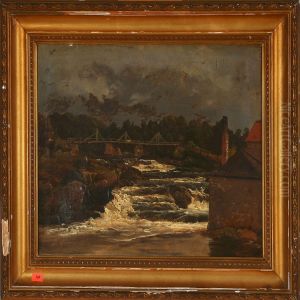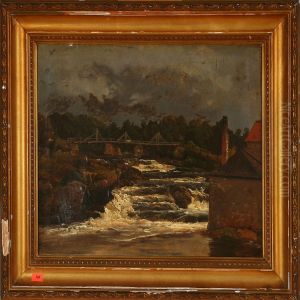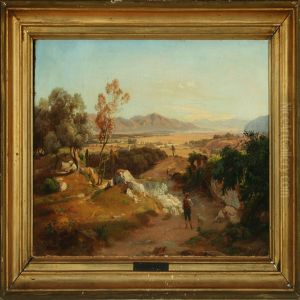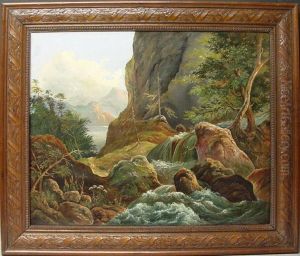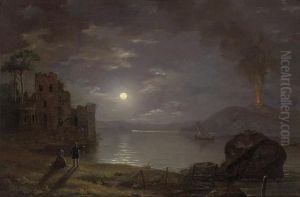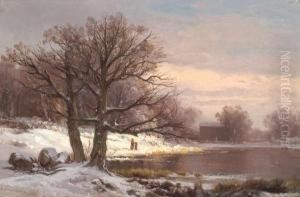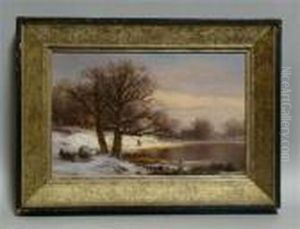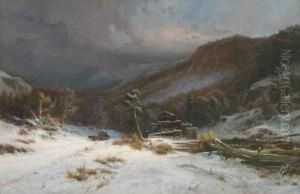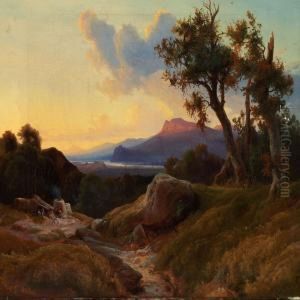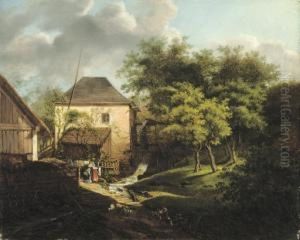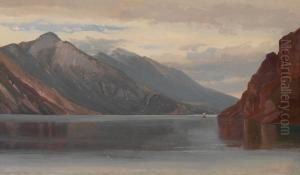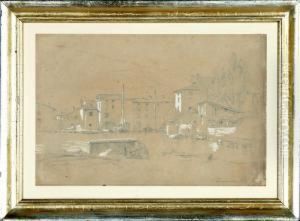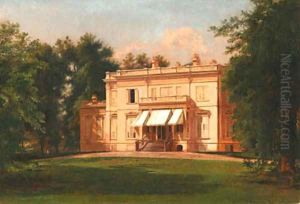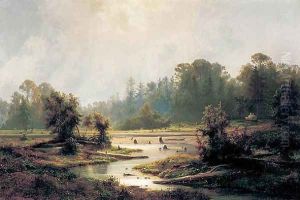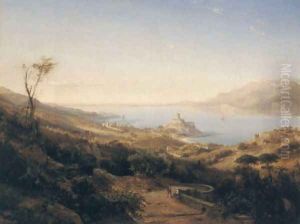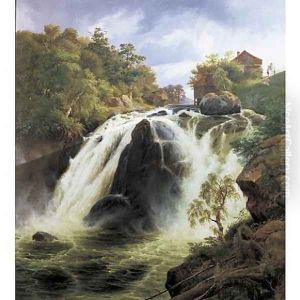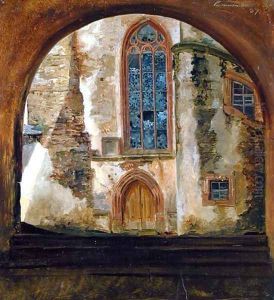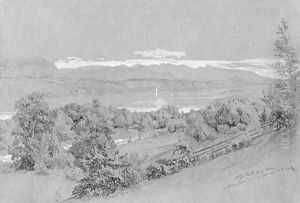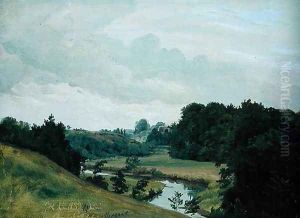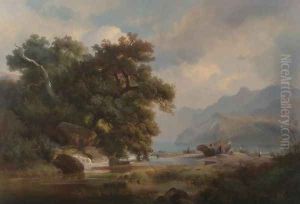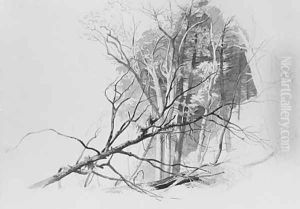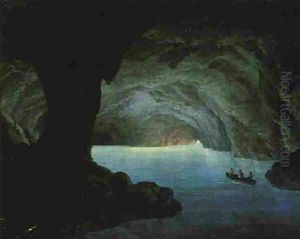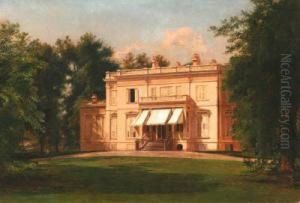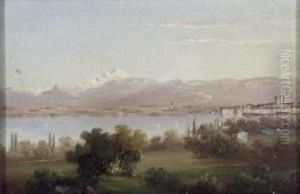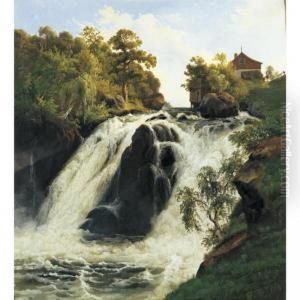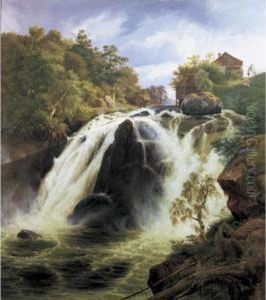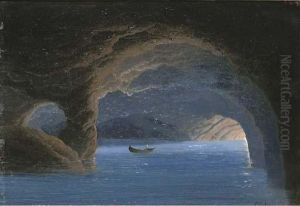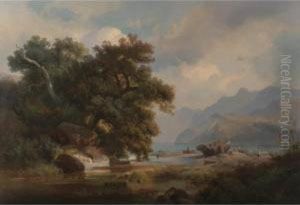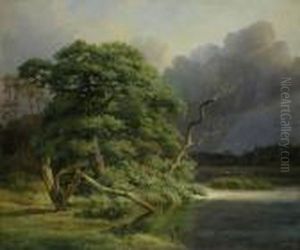Johann-Hermann Carmiencke Paintings
Johann-Hermann Carmiencke was a German-born landscape painter who became well known for his work after emigrating to the United States. Born on February 9, 1810, in Hamburg, Germany, Carmiencke received his artistic training at the Academy of Fine Arts in Copenhagen, where he studied under Christoffer Wilhelm Eckersberg, a prominent Danish painter. During his time in Europe, Carmiencke was influenced by the Romantic movement, which was characterized by a deep appreciation of nature and an emphasis on emotional expression.
Carmiencke's early career in Europe included a period of travel and painting throughout the continent. He developed a reputation for his detailed and atmospheric landscapes, which often featured dramatic skies and a sense of the sublime. In 1851, seeking new opportunities and perhaps inspired by the growing popularity of landscape art in America, he immigrated to the United States and eventually settled in Brooklyn, New York.
In America, Carmiencke's work continued to evolve, and he became part of the Hudson River School, a group of artists known for their romantic landscapes depicting the Hudson River Valley and the surrounding region. He traveled extensively throughout the northeastern United States, capturing the beauty of the American wilderness with a particular focus on the effects of light and atmosphere. His paintings from this period often showcased the grandeur of the American landscape, reflecting a sense of national pride and an appreciation for the untamed beauty of the country's natural scenery.
Carmiencke exhibited his work at various institutions, including the National Academy of Design in New York, where he became an associate member in 1861. His paintings were well-received, and he gained a measure of commercial success during his lifetime.
Johann-Hermann Carmiencke's contributions to American landscape painting continued to be recognized after his death on June 15, 1867, in Brooklyn. His works can be found in several museum collections, and he is remembered for his role in the development of landscape art in the United States during the mid-19th century.
